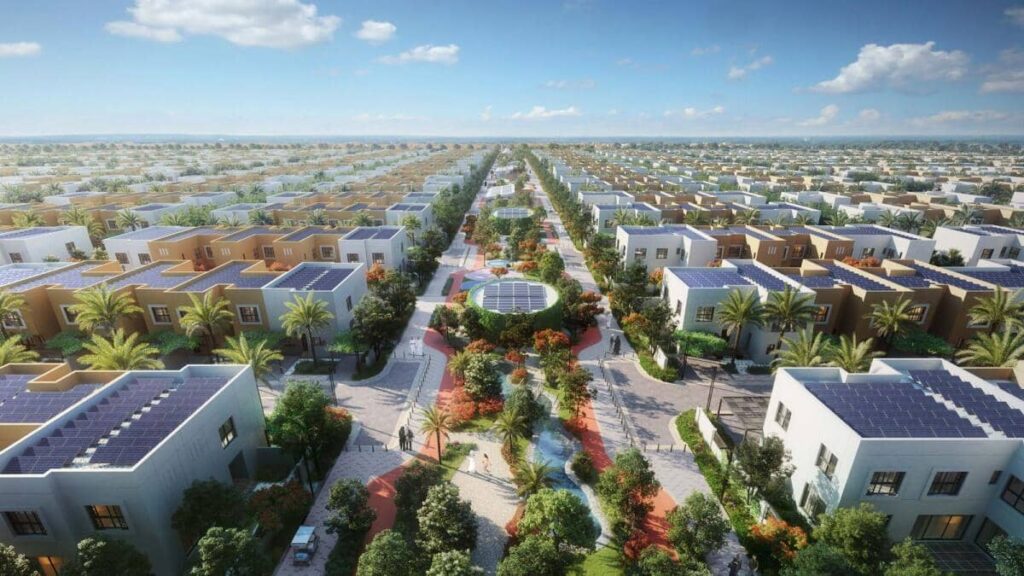The first two stages of the Sharjah Sustainable City, which each included 604 villas, were completely sold out during the course of the previous year, and a third phase with 324 villas was also introduced. Phase 1 of the handover has been finished, while phases 2 and 3 are anticipated to be handed over in 2023 and 2024, respectively.
Following an overwhelming response to the city’s transition to a sustainable way of life, the first sustainable master-planned community—which was created by the Sharjah Investment and Development Authority (Shurooq) in collaboration with Diamond Developers—announced that 2022 was a year of milestones.
The delivery of the first villas to homeowners, which marked the city’s transformation from a real estate project into a bustling neighborhood, was one of the most important milestones in 2022. More than 110 families have moved in and are now taking advantage of their new green homes’ numerous advantages, both economically and environmentally.
Yousif Ahmed Al-Mutawa, chief executive officer of Sharjah Sustainable City, said: “As we look toward the new year, it gives me immense pleasure to see the enormous progress we have made at Sharjah Sustainable City – bringing us ever closer to becoming the first eco-friendly city in the heart of Sharjah. We have achieved a great deal over the past 12 months, and this would not have been possible without the support of our partners, our staff members, our workers, and of course, our home buyers.”
Sharjah Sustainable City is a premier eco-friendly residential community that spans 7.2 million square feet in Sharjah’s Al Rahmaniya Area. The city is divided into blocks of three-, four-, and five-bedroom homes ranging in size from 2,035 square feet to 3,818 square feet, totaling 1,250 sustainable villas.
The development is consistent with the UAE’s efforts to address the food, energy, and water nexus because it offers workable solutions for ensuring food security, managing water, and energy use, and conserving natural resources.
The city is equipped with renewable energy generated by rooftop solar panels and constructed with environmentally friendly materials and passive features that save on operating expenses. Residents can thus save up to 50% on their water and electricity expenses. Additionally, the city provides free energy-efficient kitchen appliances and smart home features for the first five years and waives all servicing expenses after that.
Along with these essential amenities, Sharjah Sustainable City also provides parks, gyms, swimming pools, shopping centers, walking, and cycling paths, and green transportation. In addition, the city is home to indoor farming operations and biodomes, which are solar-powered greenhouses that produce roughly 10,000 kg of chemical-free leafy greens and vegetables annually, with the potential to grow to 15,000 kg in the future.
The city supports a number of UN SDGs, including SDG 6 (provide universal access to water and sanitation) and SDG 7 (among others, ensure universal access to affordable, dependable, and modern energy services and considerably increase the amount of renewable energy in the global energy mix).
The residential project represents a fundamental shift in the idea of future cities and urban planning, and the city has seen an increase in inquiries about it over the past year. This is indicative of how more and more people are becoming environmentally conscious and choosing sustainable lifestyles. The city intends to create community outreach programmes with a special focus on women, youth, and children in order to raise awareness about sustainability.
Sharjah Sustainable City, built on the three sustainability pillars of environmental, social, and economic sustainability, aims to lower carbon emissions and embraces the idea of “living locally” in a fully integrated and vibrant community that offers a distinctive and sustainable way of life, thereby supporting regional, national, and international efforts to lower carbon footprints.
